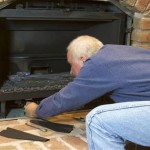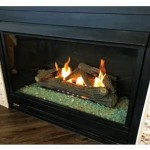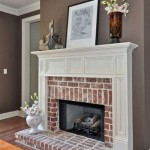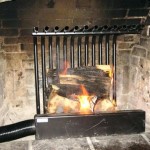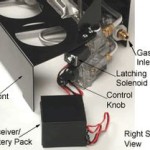DIY Concrete Over Brick Fireplace: A Step-by-Step Guide
Transforming a traditional brick fireplace into a sleek and modern masterpiece with concrete is a rewarding DIY project. This guide provides a detailed walkthrough, covering everything from planning to finishing, enabling you to achieve a stunning, customized look.
1. Preparation and Planning
Before embarking on this transformation, meticulous planning is crucial. The first step involves assessing the existing fireplace. Measure its dimensions, including height, width, and depth. Take note of the condition of the brick, checking for cracks, loose mortar, or any signs of damage. Consider the final desired aesthetic, whether a clean, minimalist design or a textured, rustic finish.
Materials selection is another critical aspect. Choose a concrete mix suitable for fireplace applications, taking into account factors like durability, heat resistance, and ease of application. You'll also need tools such as a trowel, mixer, forms, and a level for creating the desired shape and ensuring a smooth, even surface.
2. Surface Preparation
A smooth and even surface is essential for a successful concrete overlay. Start by cleaning the existing brickwork thoroughly to remove any dirt, dust, or debris. This can be achieved using soap, water, and a stiff brush. Once clean, apply a bonding agent to ensure proper adhesion between the concrete and the brick. This primer will improve the surface's compatibility and create a strong bond.
Next, address any imperfections. If the brickwork has cracks or loose mortar, repair them using a mortar mix compatible with the existing material. Ensure the repairs are level and smooth. If you want a textured concrete finish, use a masonry brush to create a rough surface on the brick. However, if a smooth finish is desired, sand down any rough areas with sandpaper.
3. Building the Concrete Formwork
Formwork serves as a mold for the concrete, shaping and supporting it while it cures. Create the formwork around the fireplace using plywood or other suitable materials. It is vital to ensure the formwork is plumb and square, as any irregularities will translate into the final concrete surface. Secure the formwork with screws and clamps, ensuring it is robust enough to withstand the weight of the wet concrete.
To create a smooth transition between the concrete overlay and the surrounding walls, use a flexible molding material like silicone caulk. Apply it around the edges of the formwork where it meets the existing walls. This will create a clean and seamless finish.
4. Concrete Application and Finishing
Mixing the concrete is a crucial step. Follow the manufacturer's instructions carefully, using the appropriate water-to-cement ratio. Over-mixing can weaken the concrete, while under-mixing can lead to inconsistencies. Use a concrete mixer for large projects, while a bucket and trowel suffice for smaller areas.
Once the concrete mix is ready, carefully pour it into the formwork, starting at the bottom and working upwards. Use a trowel to distribute the concrete evenly and compact it, removing any air pockets. Aim for a consistent thickness throughout the overlay.
After pouring, use a trowel or a concrete float to smooth the surface. This helps to achieve a uniform appearance and eliminates any imperfections. For textured finishes, use a concrete stamp or other texturing tools during the wet stage. However, if a smooth finish is desired, use a sponge float to create a polished, even surface.
5. Curing and Finishing Touches
Curing is crucial for the concrete to gain strength and durability. Keep the concrete moist by regularly spraying it with water or covering it with a damp cloth. The curing period can vary depending on the concrete type and the ambient temperature. Allow the concrete to cure for at least 24 hours before removing the formwork.
After the concrete has cured, smooth any rough edges or imperfections using sandpaper or a concrete grinding tool. You can then apply a sealant to protect the concrete from moisture and staining. Choose a sealant that is specifically designed for concrete and fireplace applications. Consider using a heat-resistant sealant if the fireplace will be used regularly.
Once the sealant has dried, you can add any final touches, such as painting, staining, or applying a decorative finish.

Diy Concrete Cement Fireplace Sarah Sherman Samuel

Diy Concrete Cement Fireplace Sarah Sherman Samuel

Diy Concrete Cement Fireplace Sarah Sherman Samuel

Diy Concrete Fireplace Makeover Before After Cherished Bliss

Diy Concrete Fireplace Makeover Before After Cherished Bliss

Diy Concrete Fireplace Makeover Before After Cherished Bliss

How To Put Concrete Over A Brick Fireplace In 8 Steps

Brick Fireplace Update Using Cement And Aged Wood Mantel

Diy Concrete Fireplace Makeover Before After Cherished Bliss

Brick Fireplace Update Using Cement And Aged Wood Mantel



